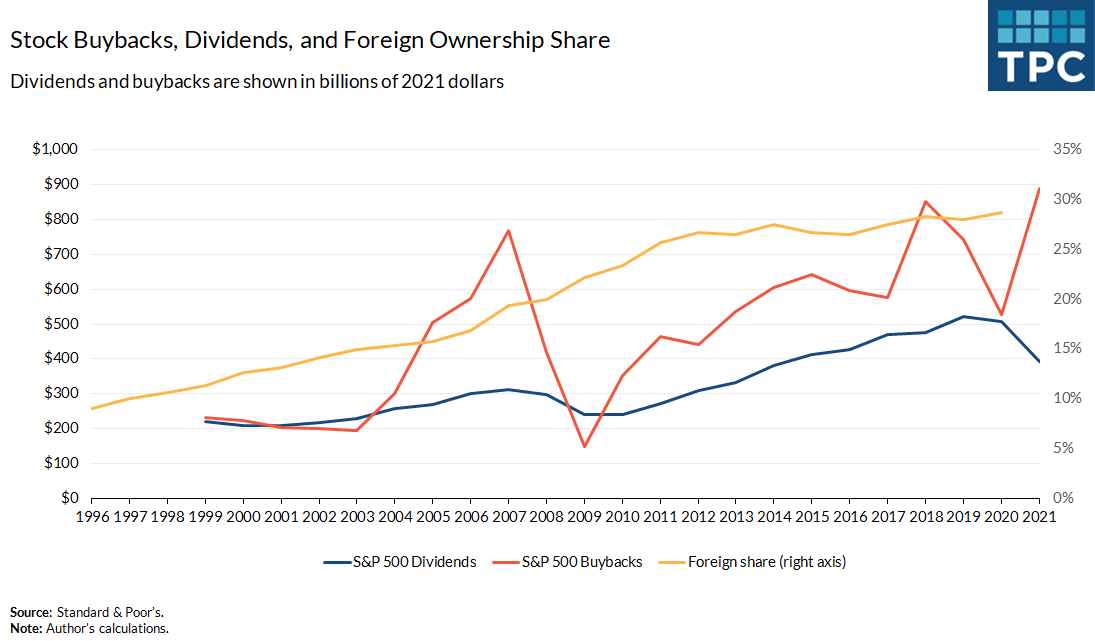Why Does the UTPR Matter? | Pillar Two & US Tax Base
Last week, Rep. Jason Smith (R-MO) introduced legislation that would instruct the Treasury to create a list of countries that subject U.S. taxpayers (including businesses) to extraterritorial or discriminatory taxes, and impose increased taxes on companies and individuals from those countries.
If you examined the proposal without background context, you might assume it was a general tool for the U.S. to respond to bilateral trade disputes. However, in the current global context, Smith’s legislation is a warning shot at a component of a multilateral treaty brokered through the Organisation for Economic Co-operation and Development (OECD). This component, known as the Undertaxed Profits Rule (UTPR), is mentioned by name in Smith’s accompanying press release.
As the UTPR is a new concept, it is worth explaining what it is and why Rep. Smith cares about it. In a sentence, the Undertaxed Profits Rule (UTPR) is a looming extraterritorial enforcement mechanism for a tax base the U.S. has not adopted.
The Tax Base
Let’s start by explaining the issue of the tax base. The base of the UTPR is corporate income, and the UTPR is a component of the OECD’s attempt to resolve some slippery issues in international tax. It is accompanied by a number of other rules, collectively known as Pillar Two, which attempt to establish 15 percent as a lower bound on effective corporate income tax rates around the world.
Absent cooperation by tax authorities, it is thought, corporations may seek rates even lower than 15 percent, especially for intangible components of their business like intellectual property, which can easily be “moved” around the world to the most favorable jurisdiction.
But Pillar Two cannot merely have rules with respect to rates alone; a tax rate without a tax base is not a tax rate at all. For example, a 15 percent tax rate where taxpayers can deduct half their income from taxable income is really more like a 7.5 percent rate. So Pillar Two attempts to avert this problem by defining a tax base, not just a tax rate.
U.S. tax rates are mostly in line with Pillar Two. The headline domestic tax rate in the U.S. is 21 percent, and even for highly mobile international or intangible income, the U.S. has rates relatively close to the 15 percent minimum through provisions like Global Intangible Low-Taxed Income (GILTI) or Foreign-Derived Intangible Income (FDII).
However, the U.S. calculates corporate income differently than the Pillar Two rules, because “income” is a much trickier concept to define in practice than it is to consider in theory. Furthermore, Congress has regularly used tax policy for purposes other than precisely hewing to a percentage of income—whether measured by IRS standards, accounting standards, or otherwise. For example, Congress added a variety of tax credits for green energy in 2022.
These two issues create the possibility that U.S. companies paying above-15-percent rates by U.S. standards, or companies taking advantage of entirely intentional features of the U.S. tax code, would end up below the Pillar Two 15 percent target due to differences in measurement standards or to the Pillar Two rules not accommodating U.S. credits.
Non-Adoption by the U.S.
Pillar Two does offer a way for a country to bring its corporations into compliance. A combination of an Income Inclusion Rule (IIR), which brings foreign subsidiaries up to the minimum, and a Qualified Domestic Minimum Top-up Tax (QDMTT), which brings domestic income taxes up to the OECD minimum, can ensure the 15 percent rate.
However, the U.S. has not adopted these provisions. While the U.S. Treasury Department under the Biden administration has been supportive of the broader project, Congress has not taken these actions, for a variety of reasons. First, the Pillar Two framework is relatively new, so there has been limited time to bring the U.S. into compliance with the rules, and there is no immediate financial incentive to conform to the Pillar Two base. Republicans have been skeptical of the merits of the project at large. Democrats, in their most recent corporate tax reform, introduced an entirely different domestic minimum tax that happens to share the OECD’s 15 percent rate, but not the Pillar Two base. And members of Congress in both parties may have qualms about ceding congressional authority over the U.S. domestic tax base to an international body.
Extraterritorial Enforcement
This brings us to the UTPR, which is among the most controversial elements of the OECD project and creates the financial incentive for countries to adopt Pillar Two-style taxes. Consider a multinational enterprise (MNE) with at least some low-tax income by Pillar Two standards, whether in its home country or foreign subsidiaries. If its home country doesn’t have a QDMTT or IIR, other countries, under the UTPR, can swoop in and collect top-up tax instead, almost as if standing in for a Pillar Two-compliant home country. Specifically, the other countries allowed to levy the UTPR would be ones in which the multinational has a footprint. If multiple countries are eligible to levy the UTPR, there is a formula by which these other countries would divvy up the revenues, based on their share of the company’s assets and employees. While the UTPR may nominally be a tax on the subsidiary, rather than the parent company, its amount is determined by the tax profile and income of the parent company, effectively enforcing the equivalent of a QDMTT and IIR on the whole group.
There are a few technical differences between IIRs and UTPRs in unusual cases like partial ownership, but they serve similar purposes; the UTPR is often described as a backstop.
However, while the IIR is well in line with existing standards of international law and controlled foreign corporation (CFC) rules, the UTPR is highly unprecedented in international law, as a group of five legal scholars recently outlined in Tax Notes. International law has generally attempted to prevent countries from reaching into each other’s domestic tax bases, with some exceptions, in order to avoid double taxation. The UTPR embraces that approach.
To the extent that countries could tax worldwide corporate income in the past, it was only for MNEs whose ultimate parent entity resided in their country. In other words, Germany might have a claim on a German company’s small foreign subsidiaries. However, the countries that house the small subsidiaries couldn’t lay claim on the parent company’s income. The UTPR inverts that, in principle allowing countries where a MNE has a toehold to assert a kind of jurisdiction over the whole thing.
Giving multiple countries claims to the same income has always been a fraught issue. Even with clear rules in theory about apportionment, countries will have strong incentives to argue over accounting details—for example, considering their own business subsidies to be spending policies unrelated to Pillar Two, while considering other countries’ business subsidies to be reductions in effective tax rate worthy of triggering a UTPR.
While the legal scholars in Tax Notes state that new policies that conflict with traditional international norms can nonetheless become accepted under “customary law” with time, UTPRs are far from settled. The Republic of Korea may have a UTPR by 2024, and countries of the European Union may have them by 2025, but as of today they are not in force anywhere on Earth and are facing resistance in the U.S. Congress. More generally, Pillar Two rules will clash with domestic tax policy provisions around the world, both those that already exist and future provisions countries might consider, potentially sparking opposition. Pillar Two comes at a significant cost to fiscal sovereignty, a cost that Rep. Smith seems inclined to reject.



.png)


